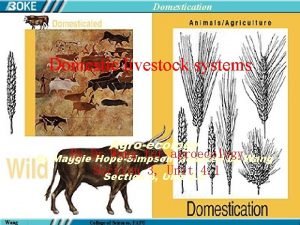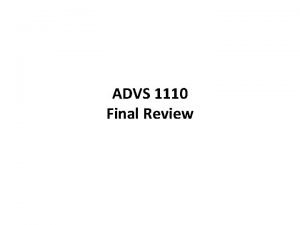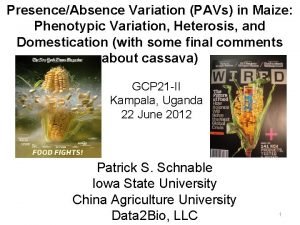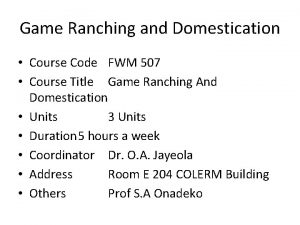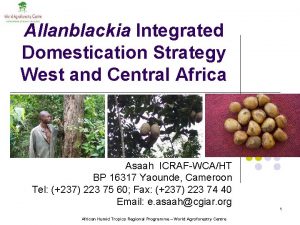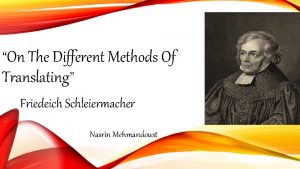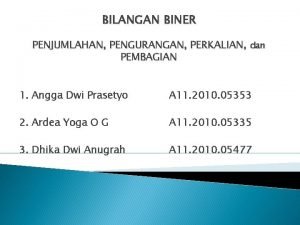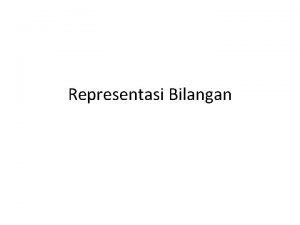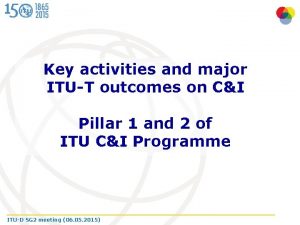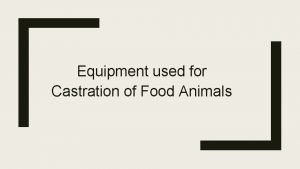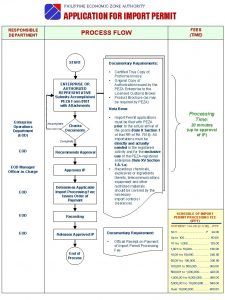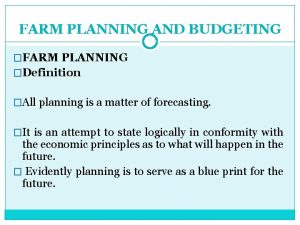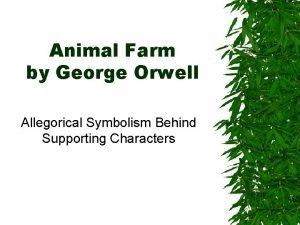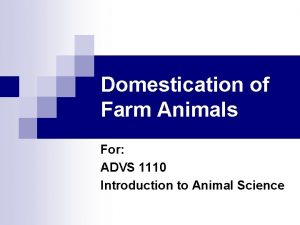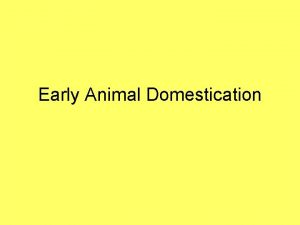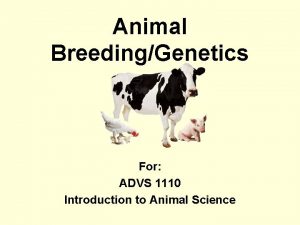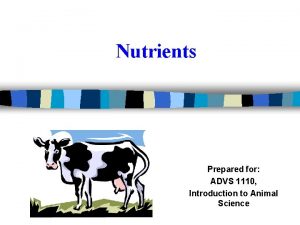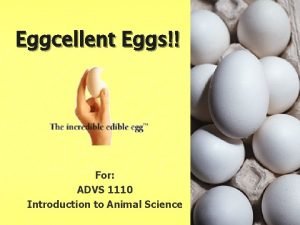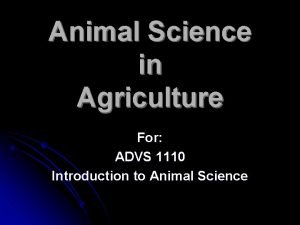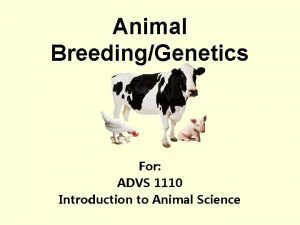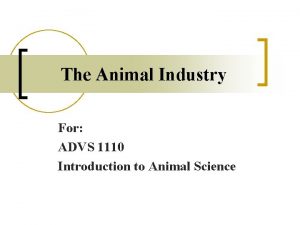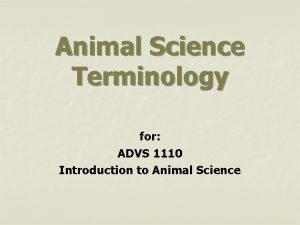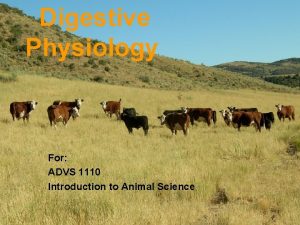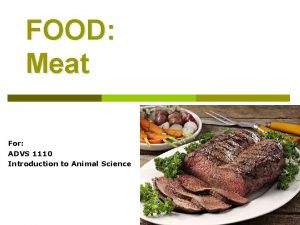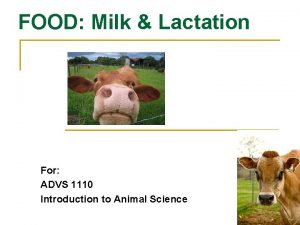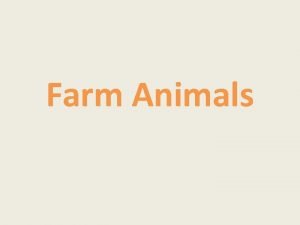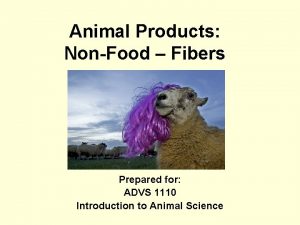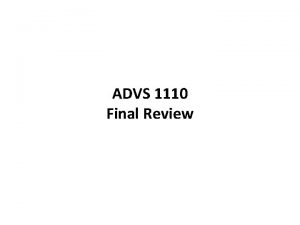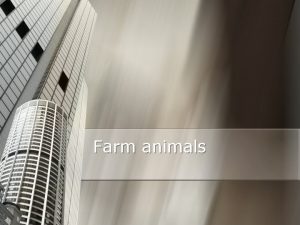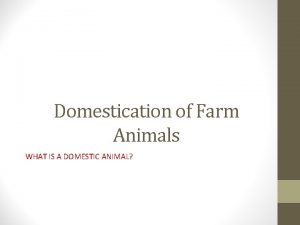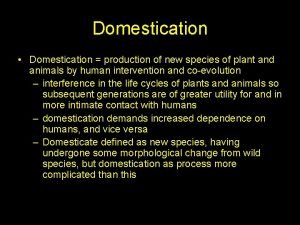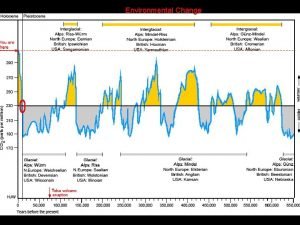Domestication of Farm Animals For ADVS 1110 Introduction
























- Slides: 24

Domestication of Farm Animals For: ADVS 1110 Introduction to Animal Science

Domestication: Terminology n Wild Animal: ¨ An animal not genetically altered by ‘artificial selection’ for use by humans. n Tame Wild Animal: ¨A wild animal that, through intervention of man, has adapted behaviorally so as to be traceable and useful to humans.

Domestication: Terminology n Exotic Animal: ¨A wild animal belonging to a species whose historic native range lies totally outside Canada and the United States and/or its territories. n Domestic Animal: ¨ An animal that has been genetically altered from the original wild species for use by humans through the agency of ‘artificial selection’.

Domestication: Terminology n Feral Animal: ¨A domestic animal that lives in the wild with no human assistance. n Feral Population: ¨A reproducing group of feral animals.

Domestication: Terminology n Breed: ¨A population of domestic animals, the individuals of which may vary within defined phenotypic and genotypic limits. ¨ When mated among themselves, the offspring produced are also within the original limits. ¨ Breeds generally have an organization or association of breeders, who generally breed their animals according to a stated conceptual standard.

Domestication: Terminology n Variety: ¨A variety is used in some species to designate groups of animals within a breed that have shared morphological (structural) traits, such as coat types, comb types, patterns, and the presence or absences of horns. ¨ A common term used in chickens and turkeys.

Domestication: Terminology n Strain: ¨A sub-population of a breed or a variety that has unique ancestral similarities or a restricted phenotypic range as compared to the breed variety as a whole. n Landrace: ¨A population of domesticated animals locally selected and used and generally bred within itself. ¨ A landrace tends to vary within itself somewhat more than does a breed and tends to not have organized breeders or a breed standard.

Domestication n Domestication by D. Webster: ¨ To adapt an animal or plant to life in an intimate association with and to the advantage of man or another species, by modifying growth and traits through provision of food, protection from enemies, and selective (artificial selection) breeding during generations of living in association and often to the extent that the domesticated forms loses the ability to survive in nature.

Domestication n Domestication by R. Bennett, “Man and Earth’s Ecosystems”: ¨ ● A domesticated plant or animal is one that people have consciously taken into the cultural context of their living space for any purpose whatsoever.

A Domesticated Animal: n The animal is valued and there are clear purposes for which it is kept. n The animal’s breeding is subject to human control. n The animal’s survival depends, whether voluntary or not, upon humans. n The animal’s behavior (psychology) is changed in domestication. n Morphological characteristics have appeared in the individuals of the domestic species which occur rarely if at all in the wild.

The Process of Domestication WILD TAME ? FERAL DOMESTIC BREED

The Process of Domestication Voluntary Symbiotic Association Based on Guest-Host Relationship: Exploitation by the Guest (Species) Scavenging Robbing Parasitism Exploitation by the Host (Man) Feeding Taming Domestication

The Process of Artificial Selection Domesticated Animal Breed Variety Strain Landrace

Chronological Development of Common Domestic Animal Species

Specie: Dog n n When: 12, 000 -14, 000 B. P. (Before Present) Where: Old & New World Why: Pet, Companion From: Wolf or Jackal

Specie: Sheep n n When: 9, 000 -10, 700 B. P. Where: Old World Why: Food, Milk & Clothing From: European Mufflon & Asiatic Urial

Specie: Goat n n When: 8, 500 -9, 000 B. P. Where: Old World Why: Food, Milk & Clothing From: Wild Goat

Specie: Cattle n n When: 6, 000 -6, 500 B. P. Where: Old World Why: Religious Reasons From: Auroch

Specie: Pig n n When: 8, 000 -9, 000 B. P. Where: Old World Why: Food & Sport From: European Wild Boar

Specie: Horse n n When: 4, 000 -5, 000 B. P. Where: Old World Why: Transport & Warfare From: Wild Horse

Specie: Chicken n n When: 5, 000 -5, 500 B. P. Where: India, Sumatra & Java Why: Cockfights, Show, Food, Religion From: Jungle Fowl

Animal Domestication: Summary n n n Without the domestication of wild animals by humans, the human race most likely wouldn’t have survived. Today’s sustainable availability of animal products and their provision of food, clothing, and shelter in some cultures is essential for the future of humankind. Responsible breeding and husbandry are mandatory if the global growth is to continue.

This is what makes our domestic animals valuable.

The End Questions?
 Domestication of animals
Domestication of animals Advs
Advs Domestication
Domestication Domestication
Domestication Domestication
Domestication Schleiermacher on the different methods of translating
Schleiermacher on the different methods of translating Er 1110-2-1156
Er 1110-2-1156 Penjumlahan binner
Penjumlahan binner Wahoo welcome uva
Wahoo welcome uva Representation of integers
Representation of integers Chuẩn ieee 754
Chuẩn ieee 754 Upsorn praphamontripong
Upsorn praphamontripong Itu-t p.1110
Itu-t p.1110 Https://a-z-animals.com
Https://a-z-animals.com Animals that eat both plants and animals
Animals that eat both plants and animals Parasitic food chain example
Parasitic food chain example Animals that eat both plants and animals
Animals that eat both plants and animals Tools used for castration
Tools used for castration Peza 8105
Peza 8105 What is farm planning?
What is farm planning? Uses of farm structures and buildings
Uses of farm structures and buildings Foxwood animal farm symbolism
Foxwood animal farm symbolism Iso 22301 utbildning
Iso 22301 utbildning Typiska drag för en novell
Typiska drag för en novell Nationell inriktning för artificiell intelligens
Nationell inriktning för artificiell intelligens
